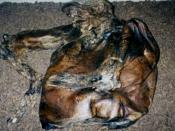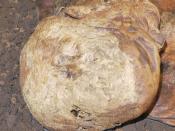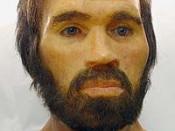From the techniques used to study the remains of human bodies and the specific locations in which they are found, it is possible to learn details of their lives prior to their deaths and subsequent preservation. Two specific cases where the study of human remains has led to an insight into the person's life are Lindow Man and Oetzi the Iceman.
"Over the past centuries, remains of many hundreds of people - men, women, and children - have come to light during peat cutting activities in north-western Europe. These are the 'bog bodies'. Some of the bodies are well-preserved complete bodies, and some are isolated heads and limbs. They range in date from 8000 B.C. to the early medieval period. Most date from the centuries around the beginning of our era." - (Archaeological Institute of America)On August 1, 1984, Andrew Mould was working with Eddie Slack, placing blocks of peat onto an elevator that would transport them to a shredding mill, when he looked at one block of peat and noticed what he thought was a piece of wood embedded in it.
He jokingly threw it at Eddie, when it missed him it hit the ground and crumbled, revealing a human foot. Andrew quickly reported his find to the police. When the police arrived they soon located the area of the bog where the foot had been dug up. On the surface of the peat, was a flap of darkened skin belonging to what was later called Lindow Man. They covered it with wet peat until scientists could be summoned to view the body.
He was discovered lying between two different layers of peat, suggesting that at the time of deposition the area had been a reasonably deep pool. His arms had badly deteriorated, probably immediately after his death.


